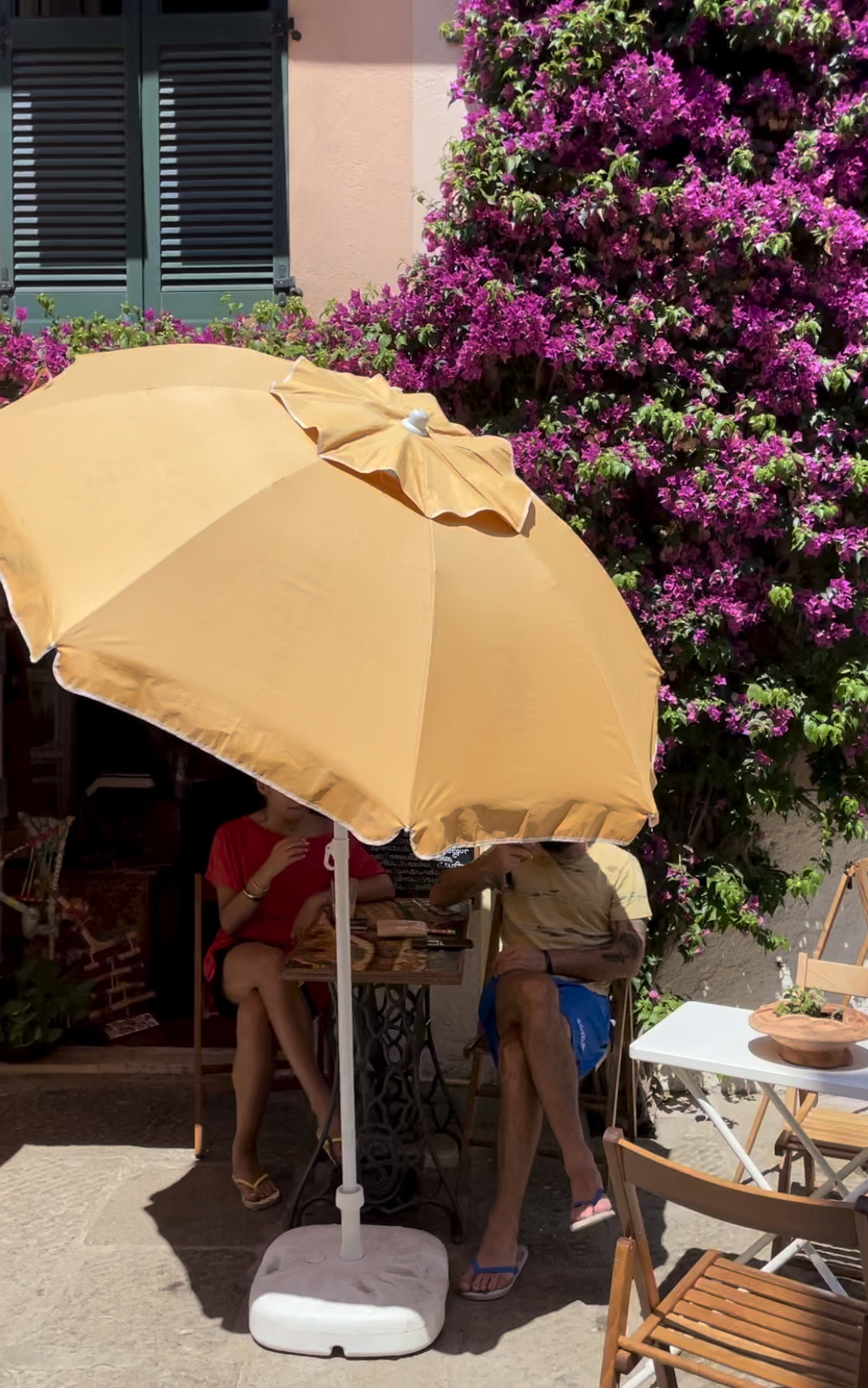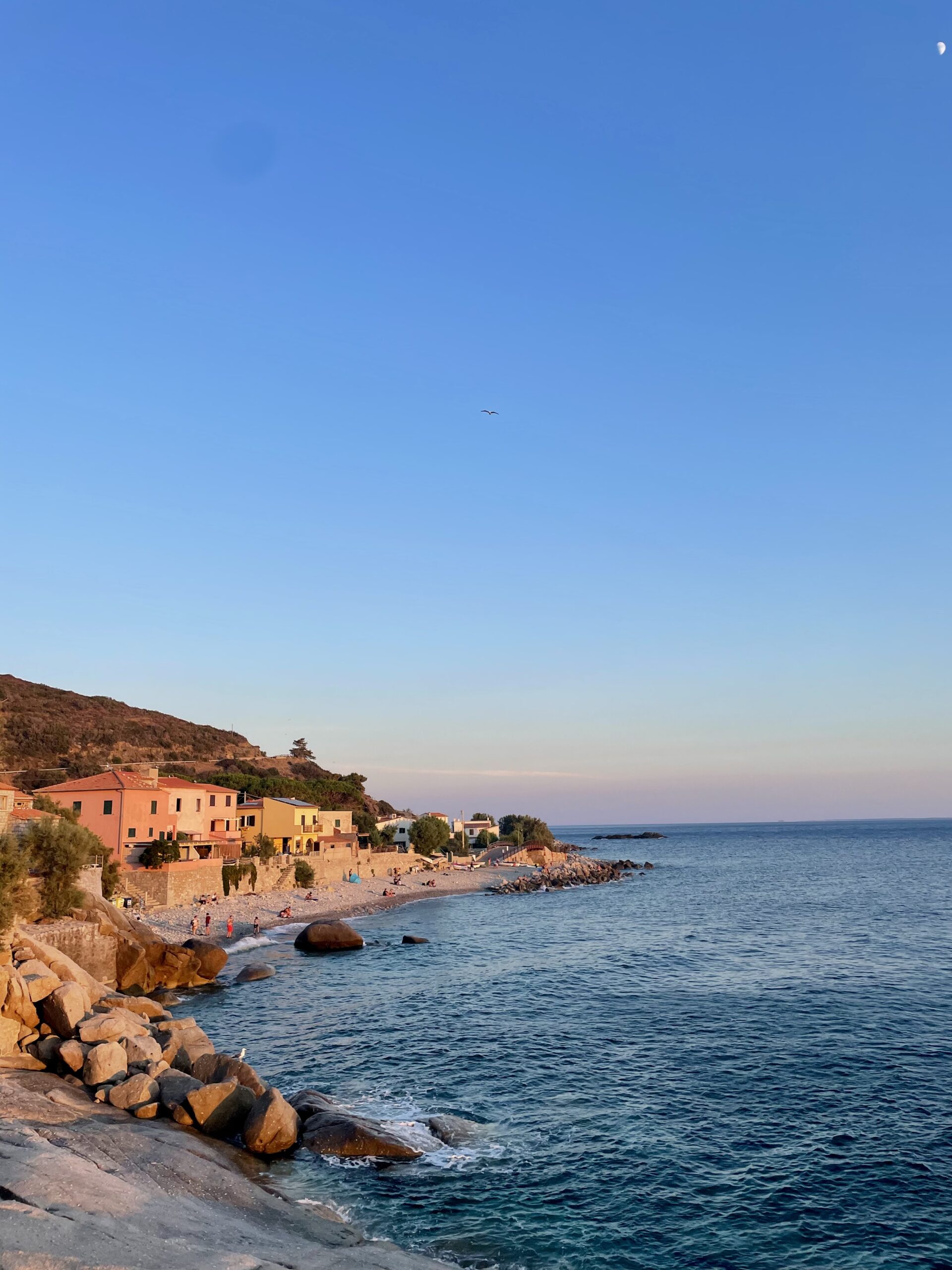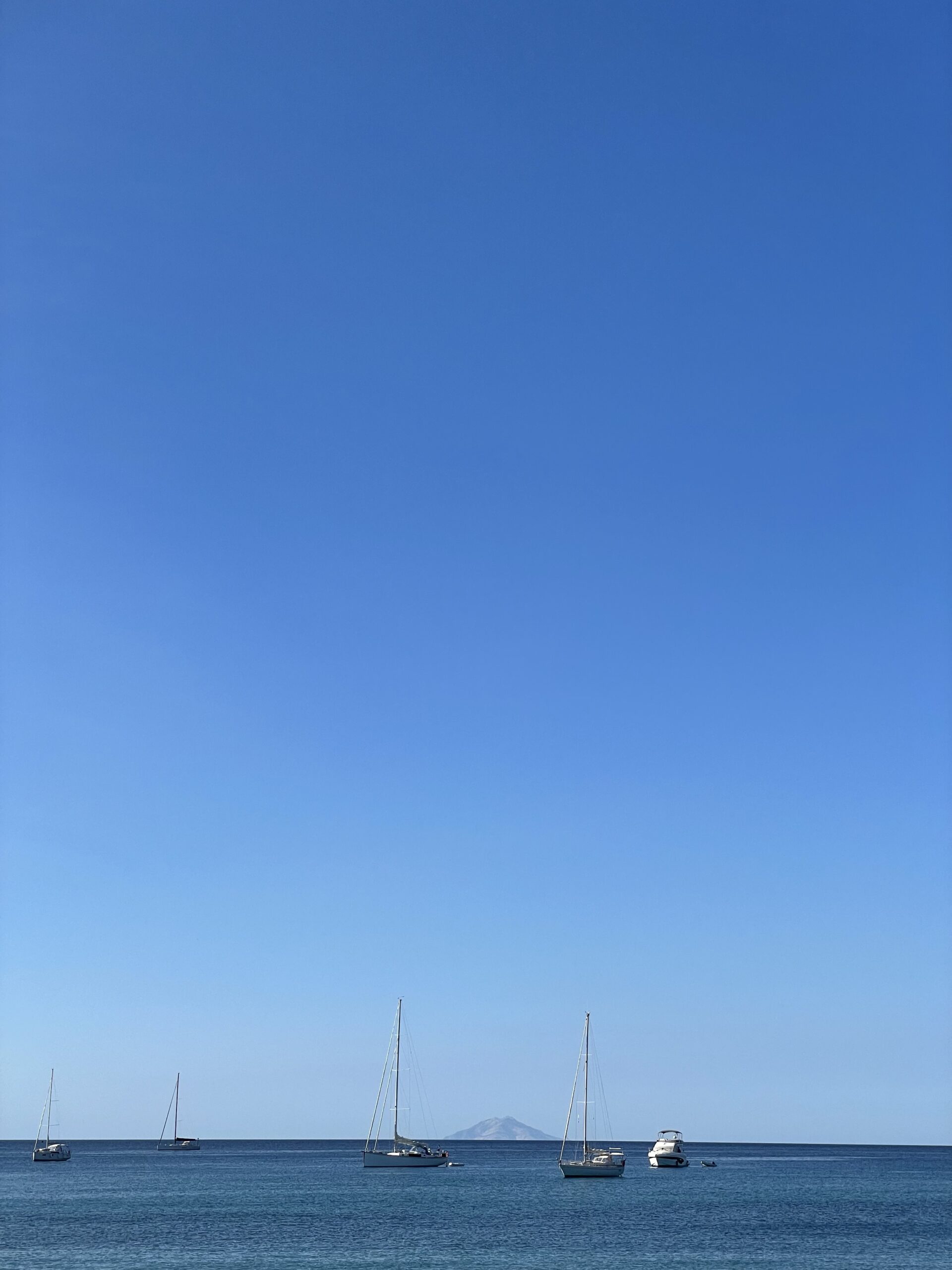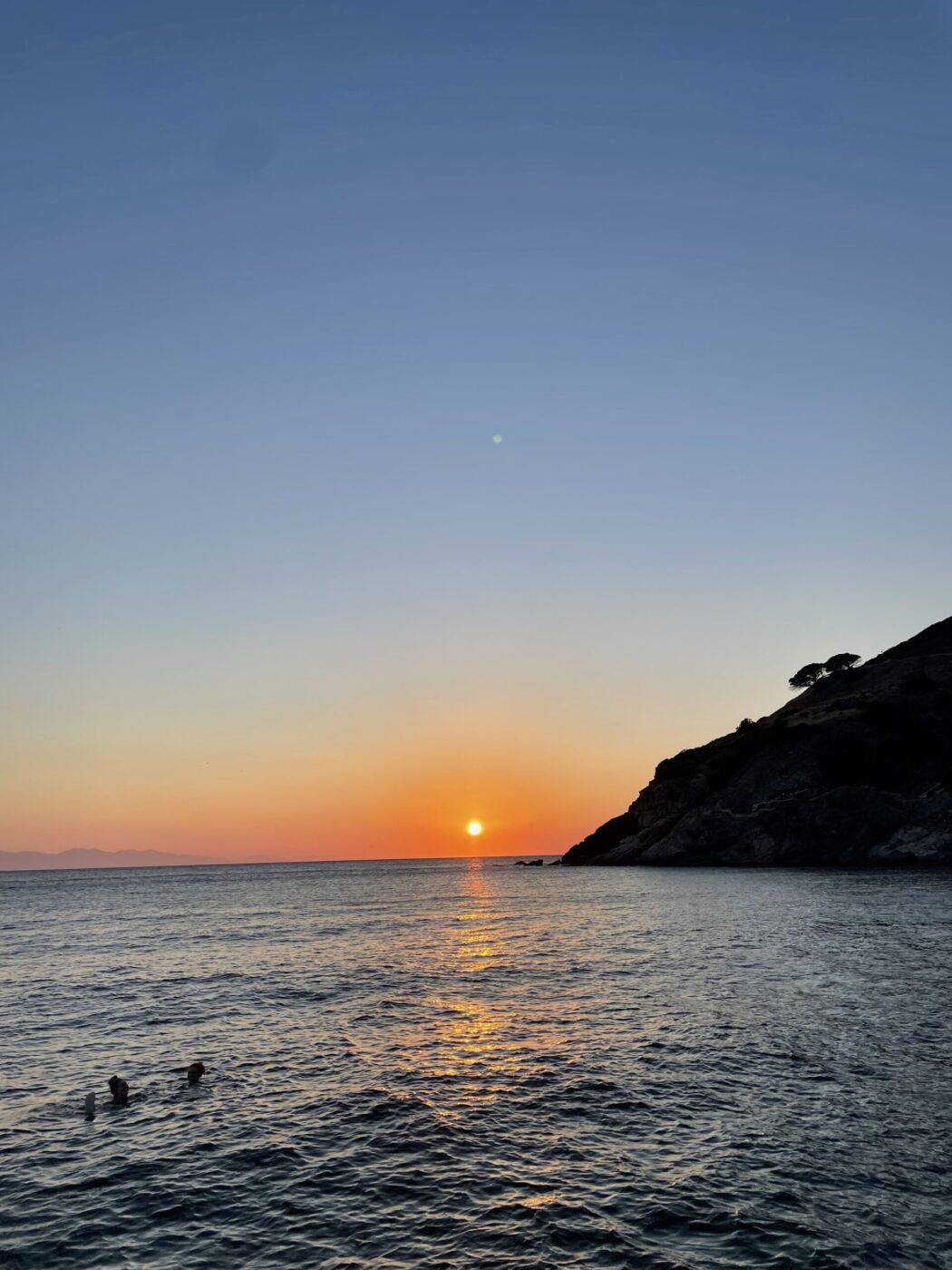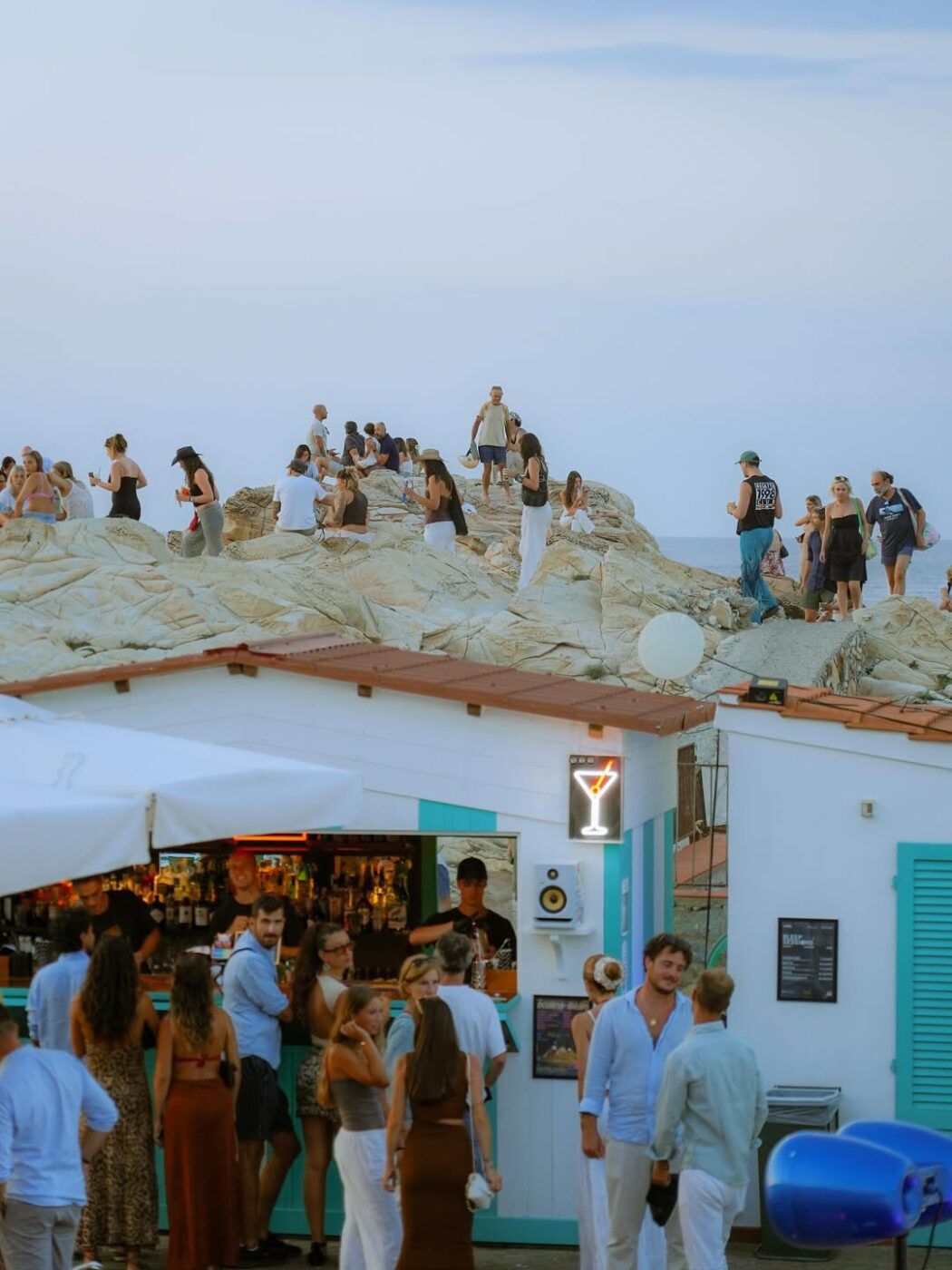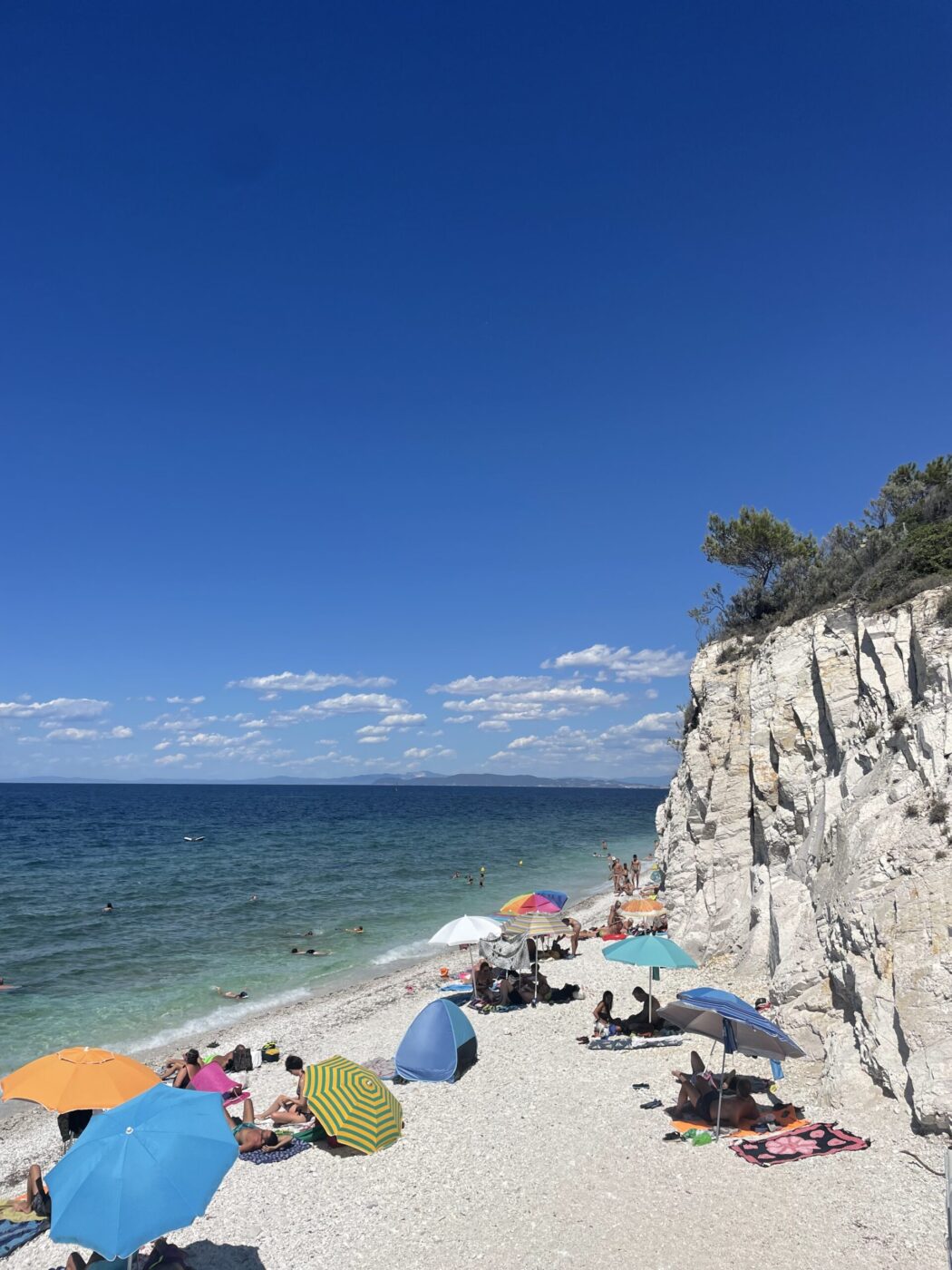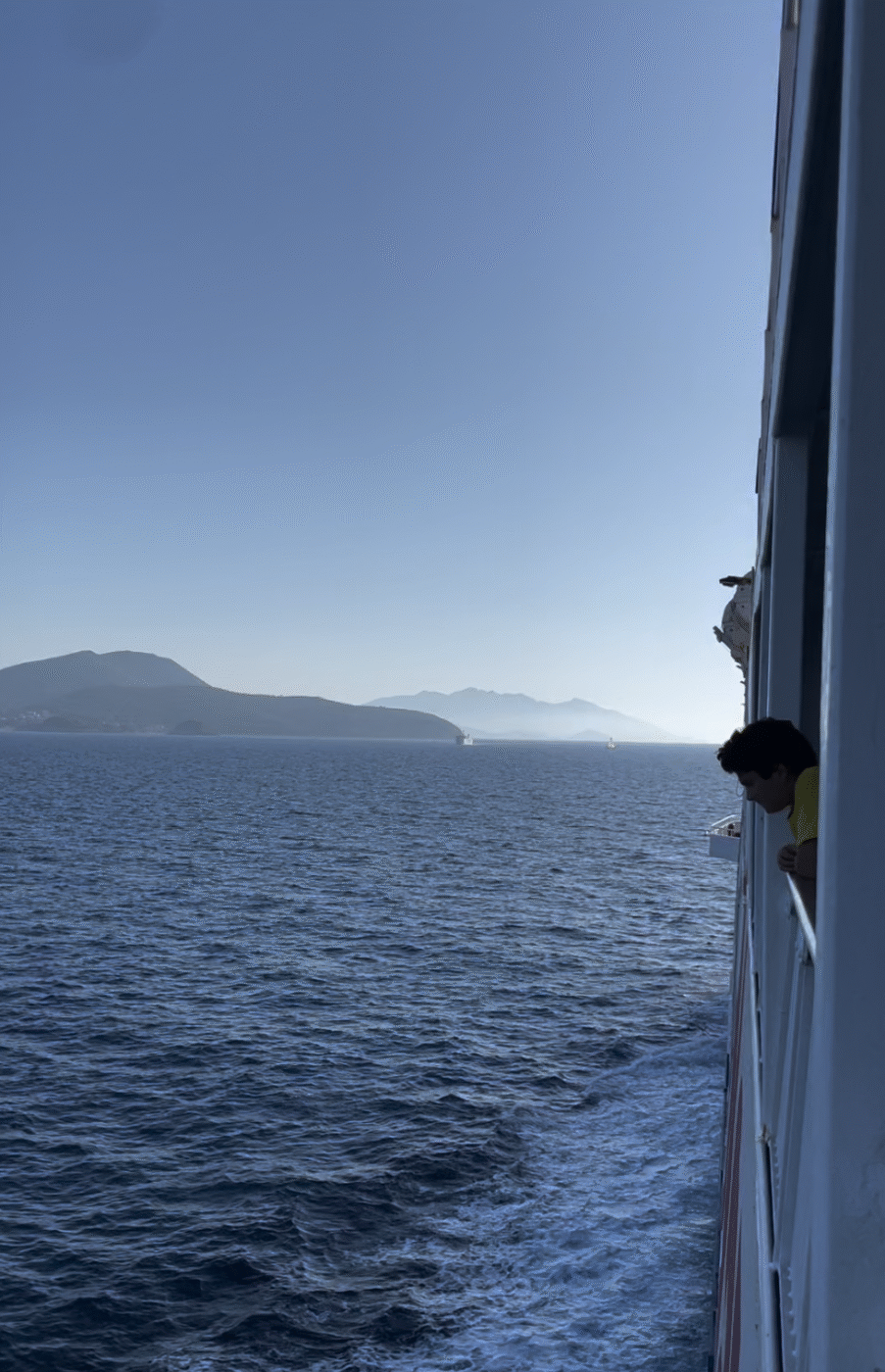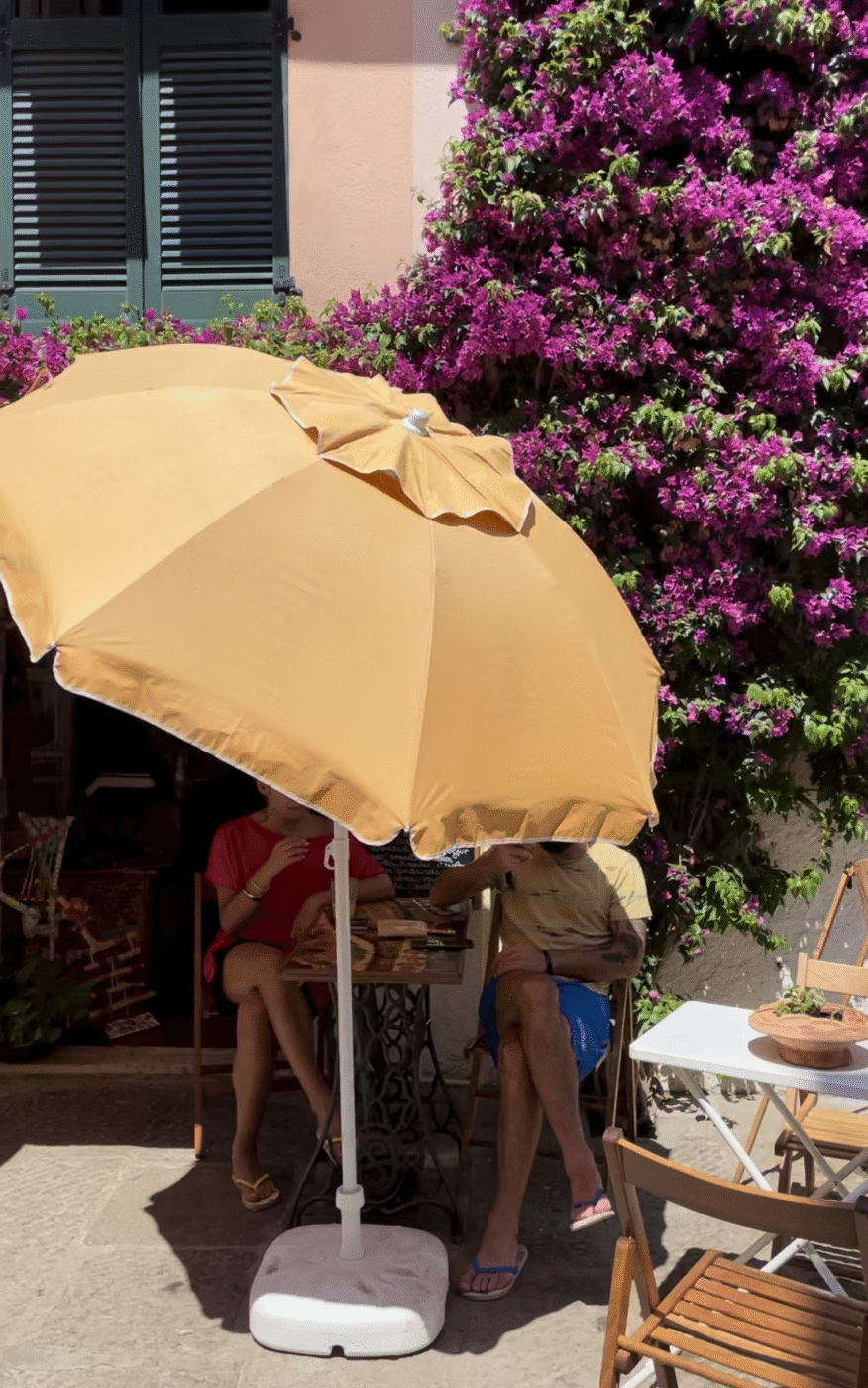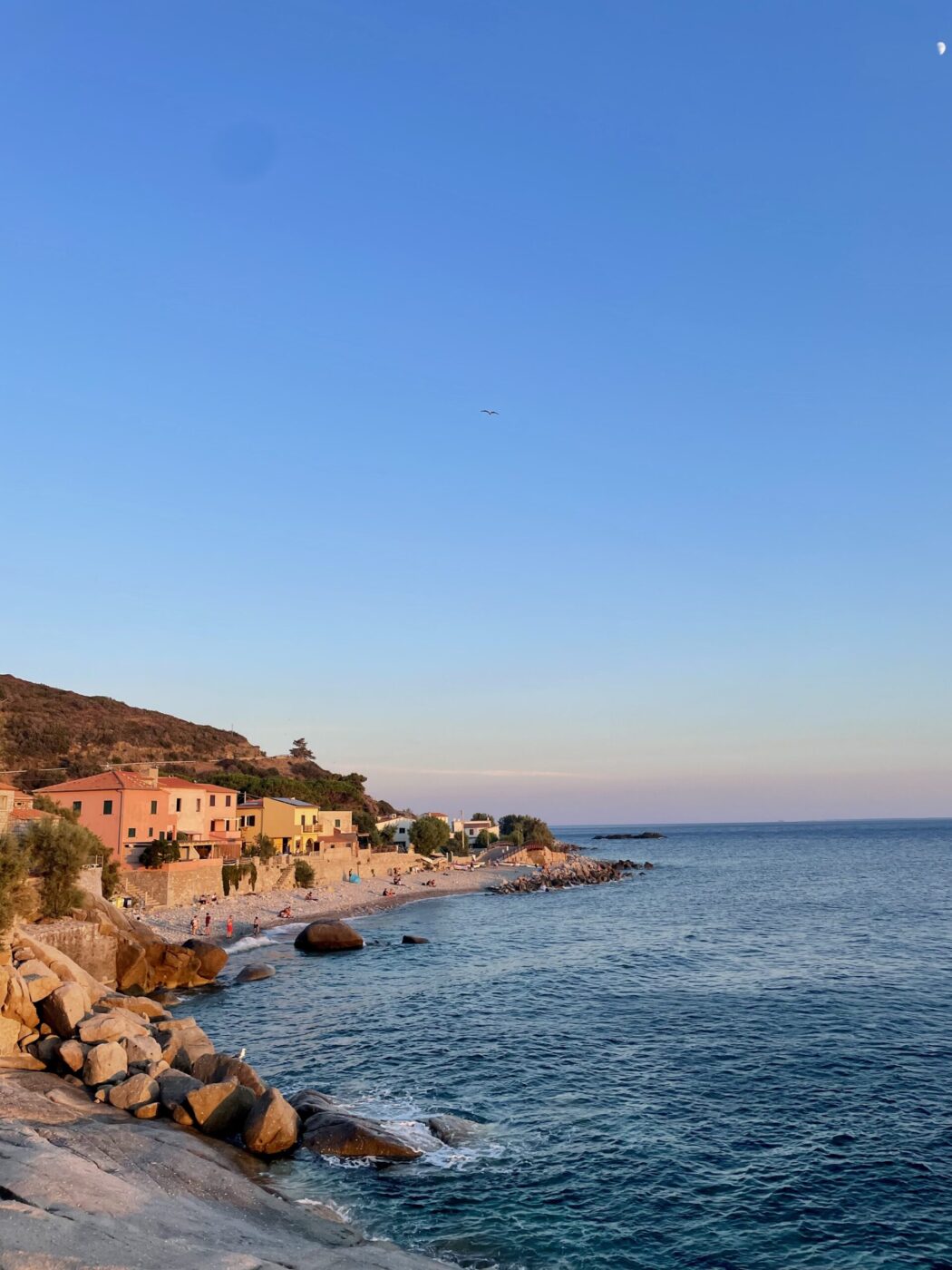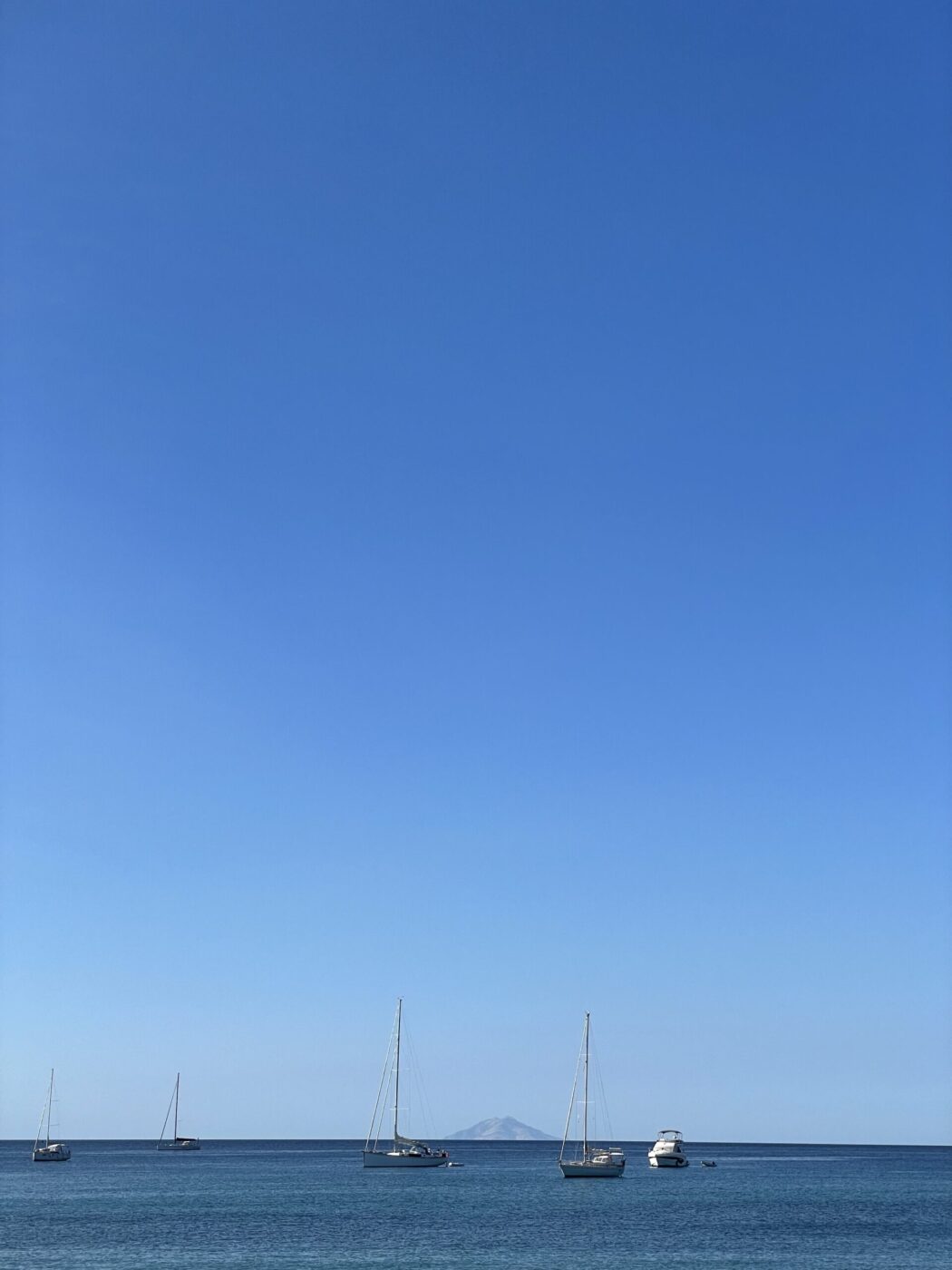You might have heard of the island, the largest of the Tuscan Archipelago, because of Napoleon Bonaparte’s exile here; after his abdication in 1814, he spent just under a year as Sovereign of Elba. From his headquarters at Villa San Martino, he set up a compact civil administration and widened roads (to fit his imperial carriage), introduced underground drainage systems, and even built a small standing army. Other famed guests have frequented Elba since, but the island, only an hour’s ferry ride from the port of Piombino, remains largely unspoiled by foreign mass tourism.
The (Tyrrhenian) sea in Elba is unlike anything I’ve ever seen before: crystal clear water that laps at bright white sand, and swarms of colorful fish in the shallows (who needs the Maldives!). The island is hilly too, with its highest point—Monte Capanne—stretching up to 1,019 meters. Dramatic cliffs cascade into the water below, crowned by umbrella-like Roman pines. Tiny villages dot hilltops and inlets, connected by winding (often dirt) roads, traversed by dusty Fiat Pandas and cinghiale alike. Elba counts about 32,000 permanent residents, a number that swells in August when Tuscans and other mainlanders arrive for Ferragosto.
Portoferraio, the main town on the north coast, greets ferry passengers with its pastel houses and striped awnings lining a busy marina of yachts and sailboats. Though it has fewer beaches than other parts of the island, it’s home to Napoleon’s Villa dei Mulini—open for visits in summer—and the old fortress, with sweeping bay views. On the southern shore, Marina di Campo draws locals for its seaside passeggiatas and a lively historic center for boutique shopping.
The best days on the island start are spent on the beach—swimming, reading, dozing, tanning, snacking, snorkeling, looking for starfish and sea urchins—before sunset aperitivo and a seafood dinner at a local osteria. After much time on the island (thanks to an Elban husband), I’ve compiled this guide to the best local spots across its 224 square kilometers.
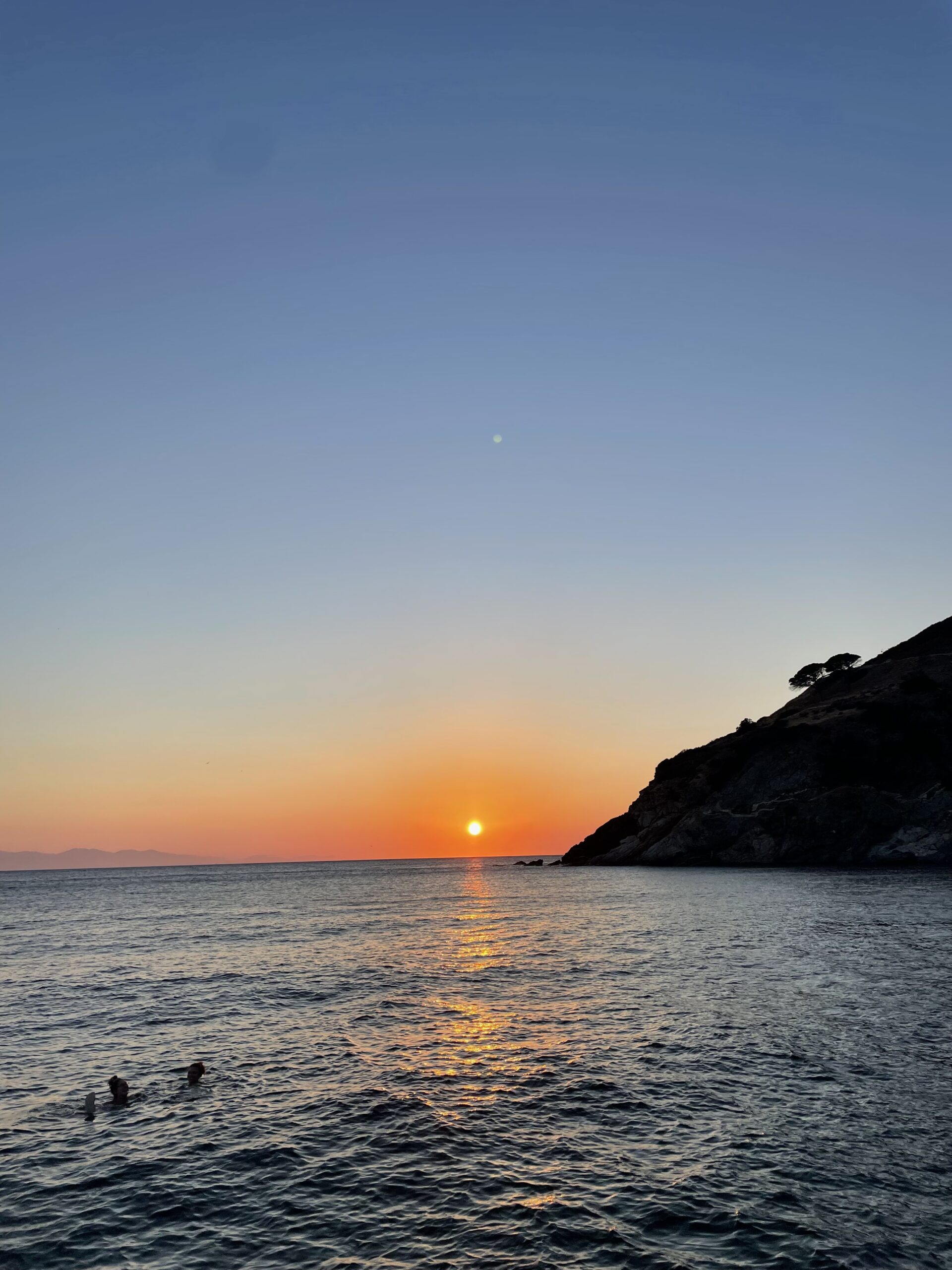
HOW TO GET TO ELBA
The easiest way to get to Elba is by ferry; it takes an hour from the mainland port of Piombino, Tuscany. The island is tricky to explore fully without a car (or a Vespa!), so I’d advise renting one on the mainland and taking it on the ferry with you, though you can also rent one in Portoferraio. There is a tiny airport on the island where small charter flights and private jets land just inches from the beach, but most people arrive by ferry.
WHEN TO GO TO ELBA
As with most places by the sea in Italy, August on Elba is rather chaotic. Instead, escape for a few days in late May or June and return in September for a final swim before the colder months; you’ll have the place pretty much to yourselves.
WHERE TO STAY ON ELBA
To live like a true Elban, rent a small villa on the beach or up in the hills. Otherwise, pick one of these small hotels.
Villa Ottone – Right on the water, across the bay from Portoferraio, this five-star hotel was once a historic palazzo, and 19th-century frescoes still cover the interior. The sunsets from here are unparalleled. Aside from the villa, they also have a hotel and cottages available to stay, and amenities like a tennis court, pool, beach club, and spa.
Hotel Hermitage – On the north side of the island at Biodola beach, this luxurious stay offers its own private stretch of sandy beachfront with some of the clearest water on the island. There are both suites and (sea-view) rooms to choose from.
La Collina sul Mare B&B – This charming bed and breakfast—which happens to be owned by two of my friends—is tucked up in the hills above Marina di Campo, surrounded by an olive grove and pine forest. The renovated farmhouse boasts a stunning view of the island and easily the best breakfast in town.
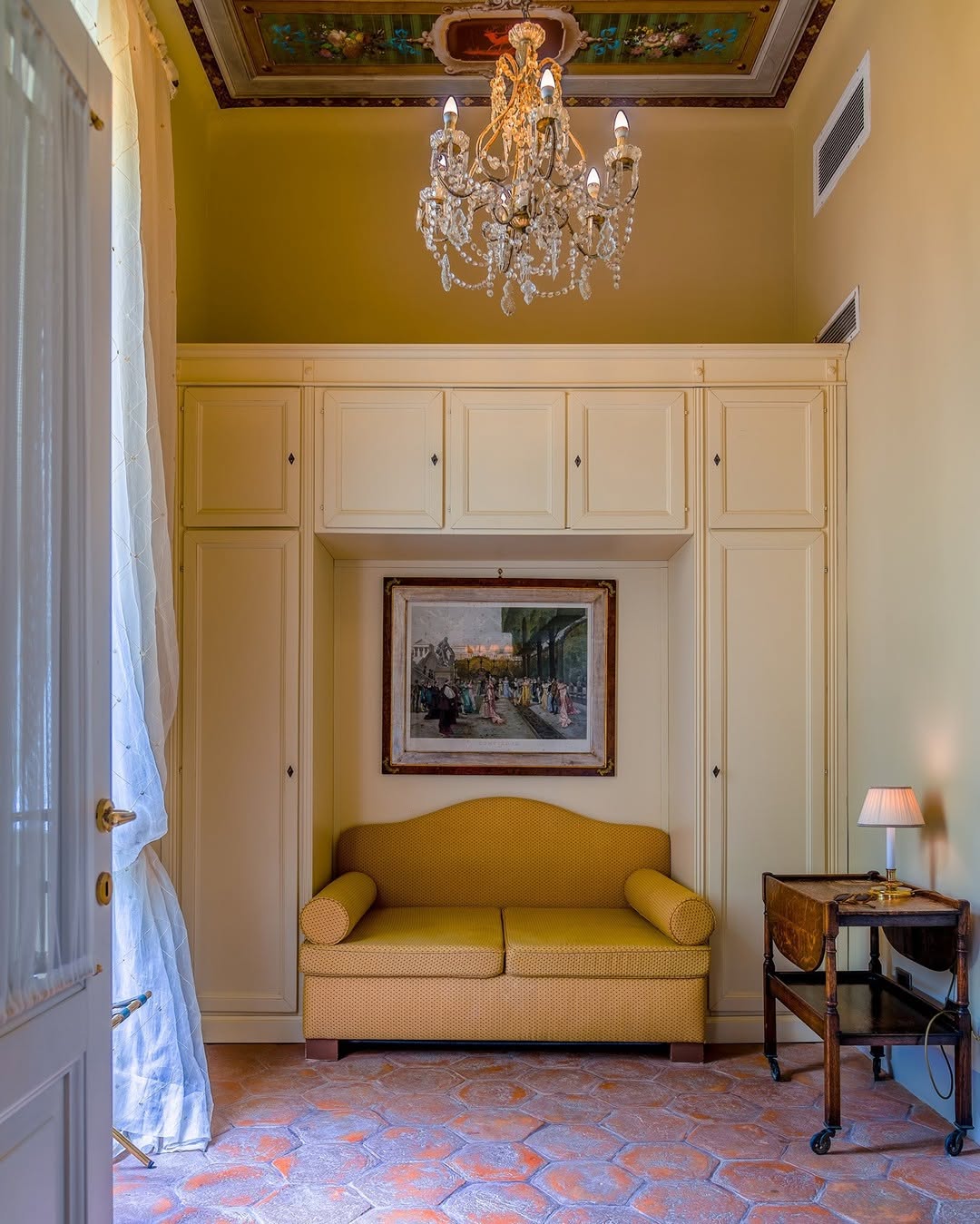
Courtesy of @villaottone
WHERE TO EAT ON ELBA
L’Affrichella (Marciana Marina) – Seriously good fine dining, with outdoor tables covered with rambling bougainvillea. There’s a really warm, convivial vibe, and the menu is delightfully seafood heavy. Get the ricci (sea urchin) in any form.
Osteria del Noce (Marciana Alta) – Located in one of Elba’s “alta” (high) towns, this restaurant has a beautiful terrace with expansive views and a menu boasting local land and sea specialties—good if you have any seafood adverse among you. Order the gnocchi with whatever fish they’ve caught that morning, and round it out with a glass of something local and one of their superb desserts.
Sciamadda (Poggio) – Run by two brothers from Liguria, this is perhaps my favorite restaurant on the island. Their menu is Ligurian meets Tuscan, with all-stars from both regions (like salsa di noci and panzanella). Everything is great, but order the homemade testaroli with pesto—and tell them I sent you.
Molo G (Portoferraio) – Located inside the Esaom shipyard, ask for an outdoor table and marvel at the superyachts. The tables are made of marble, as once was customary of Livornese ports, and the menu is scrawled in chalk every day. Always get the fritto misto.
Osteria Ferraja (Portoferraio) – This restaurant is exactly what you picture from a Mediterranean portside spot. It’s great for a quick lunch if you’re waiting for guests to arrive via ferry, as you can see the boats come in and out. The fritto misto, which comes on newspaper sheets, and the spaghetti with squid ink are must orders.
Osteria delle Grazie (Capoliveri) – This surprisingly refined restaurant offers innovative takes on classic seafood dishes. You’ll enjoy plates like scialatelli cozze pecorino e basilico (pasta with mussels, pecorino cheese, and basil) or an overflowing crudo selection at tables on a calm cobbled side street (not too) near the main square. Order the cacciucco fish stew.
Agriturismo Montefabbrello (near Portoferraio) – This organic agriturismo produces wine, olive oil, and pasta; they grow all of the grapes, olives, and ancient grains on site, in addition to their expansive vegetable garden. You’ll get to try all the above when you dine here; my favorite dishes are the antipasto dell’orto followed by a traditional Fiorentina steak. You can also stay the night in one of the five cozy rooms in their farmhouse.
conpanEpizza (Portoferraio) – A five-minute walk from the ferry port, this counter service spot dishes out fantastic seasonal pizza al taglio and a top-notch cinque e cinque with lardo and caramelized onions.
Capo Nord (Marciana Marina) – After spending a day on the rocky beach at Bagni Capo Nord, head to this incredible restaurant for a dinner of locally caught fish and for serious sunset views. Dining outside is practically right on the beach, and dining inside feels like you’re on a ship. Don’t miss the grilled octopus.
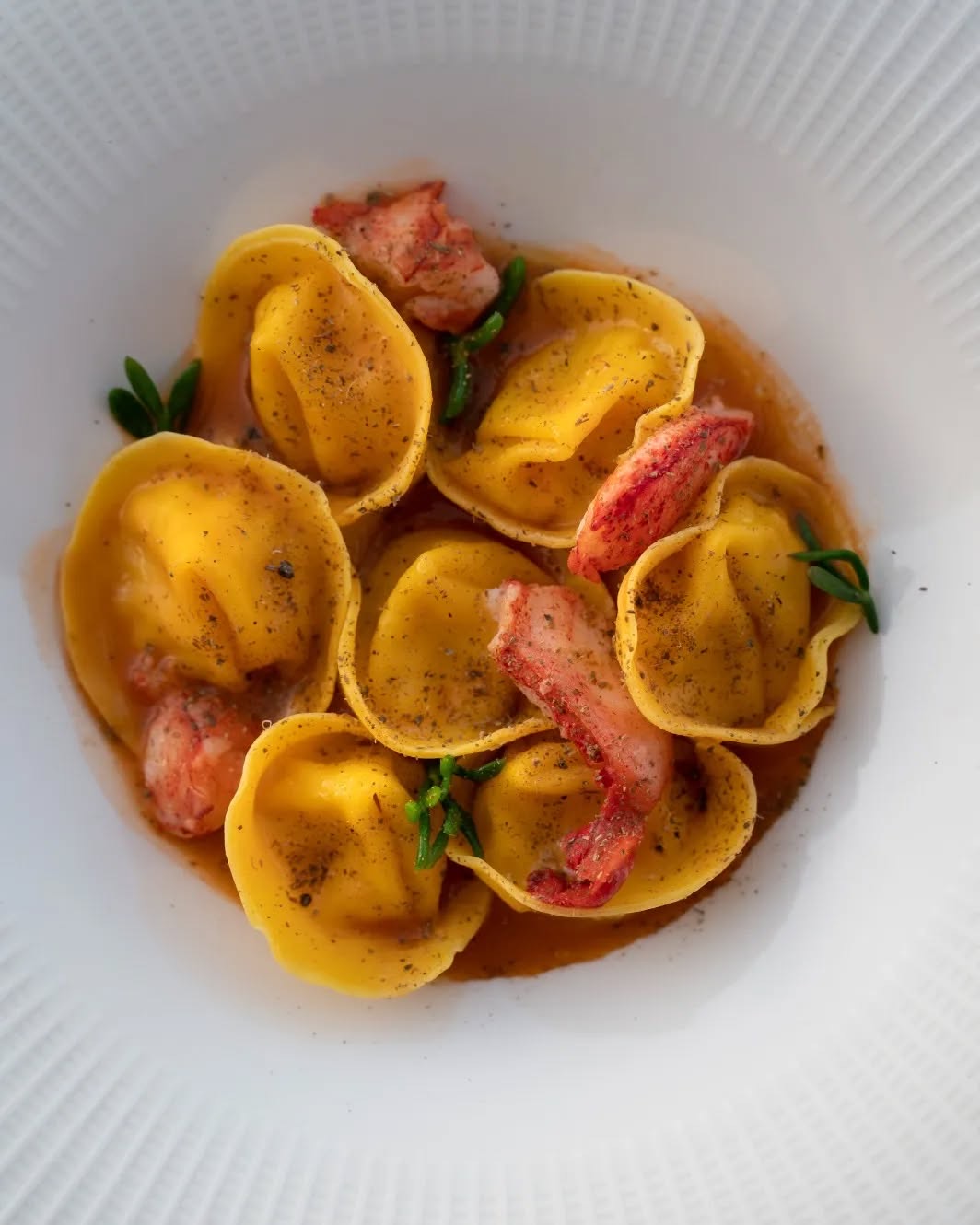
Cappelletti filled with potatoes and provola cheese, served with a shellfish bisque, lobster, and caper powder; Courtesy of @ristorantecaponord
Zero Gradi (Various locations) – Officially the best gelateria on the island. Highlights include the almond granita and the cassata gelato, but prepare to be racked with indecision.
Panificio Bertelli (Marina di Campo) – My favorite forno on the island for their slices of rosemary, onion, and olive focaccia—best if still hot from the oven. The unassuming front belies the yeasty delights within.
Alimentari e Panetteria Mara (San Piero) – For an indulgent treat, try the sweet focaccia baked with sugar, but get there early—they sell out by 8 AM. They also have a whole host of other delicious dolci.
Iroko Beach Club (Norsi Beach) – Right on the sand, this tucked-away spot offers live music and a sophisticated vibe. The day’s catch is grilled right in front of you, and each dish gets an A+ in presentation. The pasta with spider crab (or Margherita, as the locals call it) is one of the most memorable dishes I’ve had, though you’re unlikely to make a bad choice with anything. They have a great cocktail menu, too, and also serve breakfast.
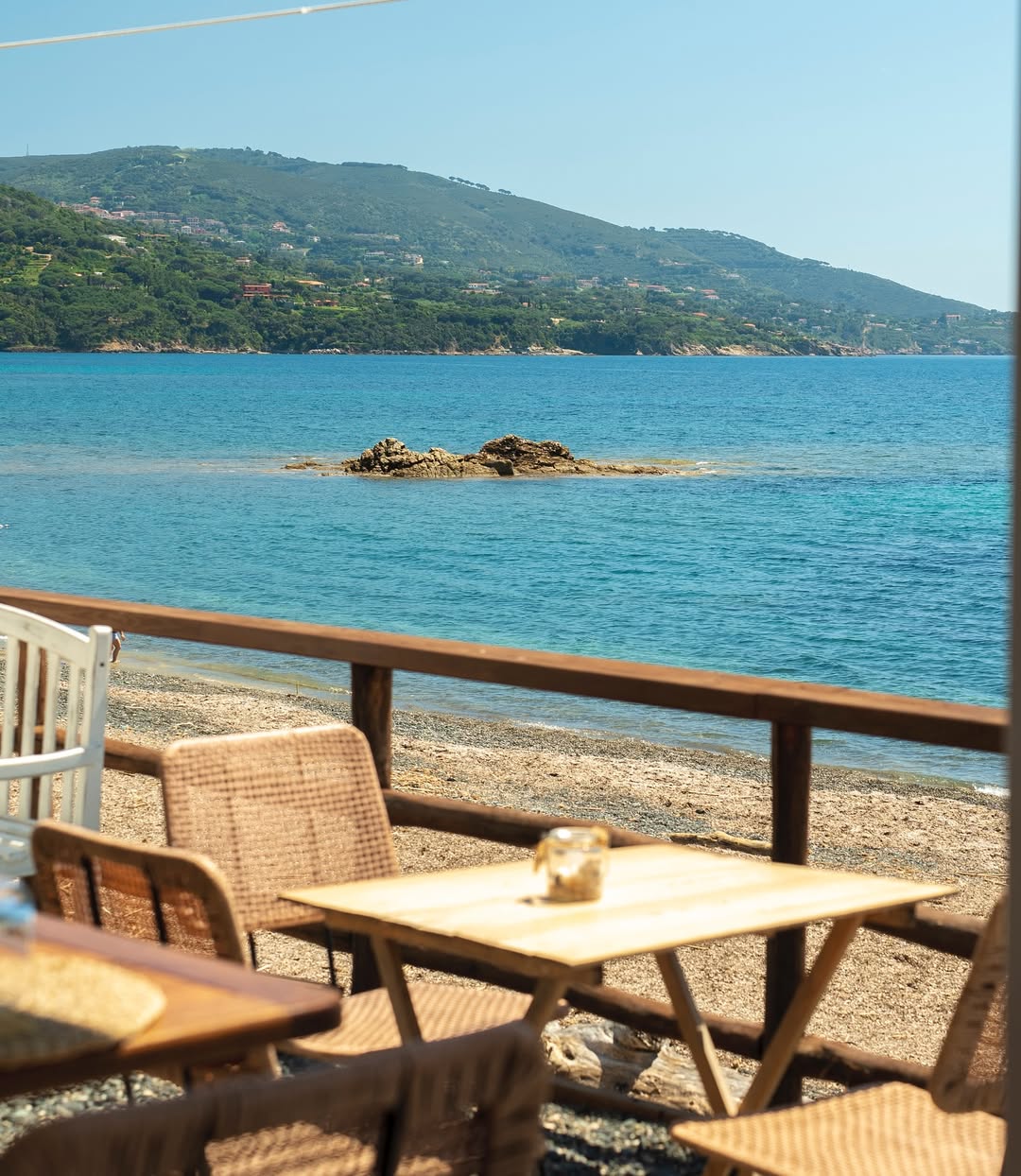
Courtesy of @irokobeachclub
WHERE TO DRINK ON ELBA
Bleep Cocktails (Marciana Marina) – Located right next to Bagni Capo Nord, this cocktail bar mixes some of the best drinks on the island, ideal for aperitivo sipping at sunset. Night brings DJ sets, neon lights, and dancing. Follow their Instagram to stay updated on events.
Paglicce Beach Club (Marina di Campo) – This bagno serves the best Negronis around. You can post up all day to enjoy the beach, come for dinner on the sand at their restaurant, or follow my lead and stop in for a nightcap and stroll along the shore.
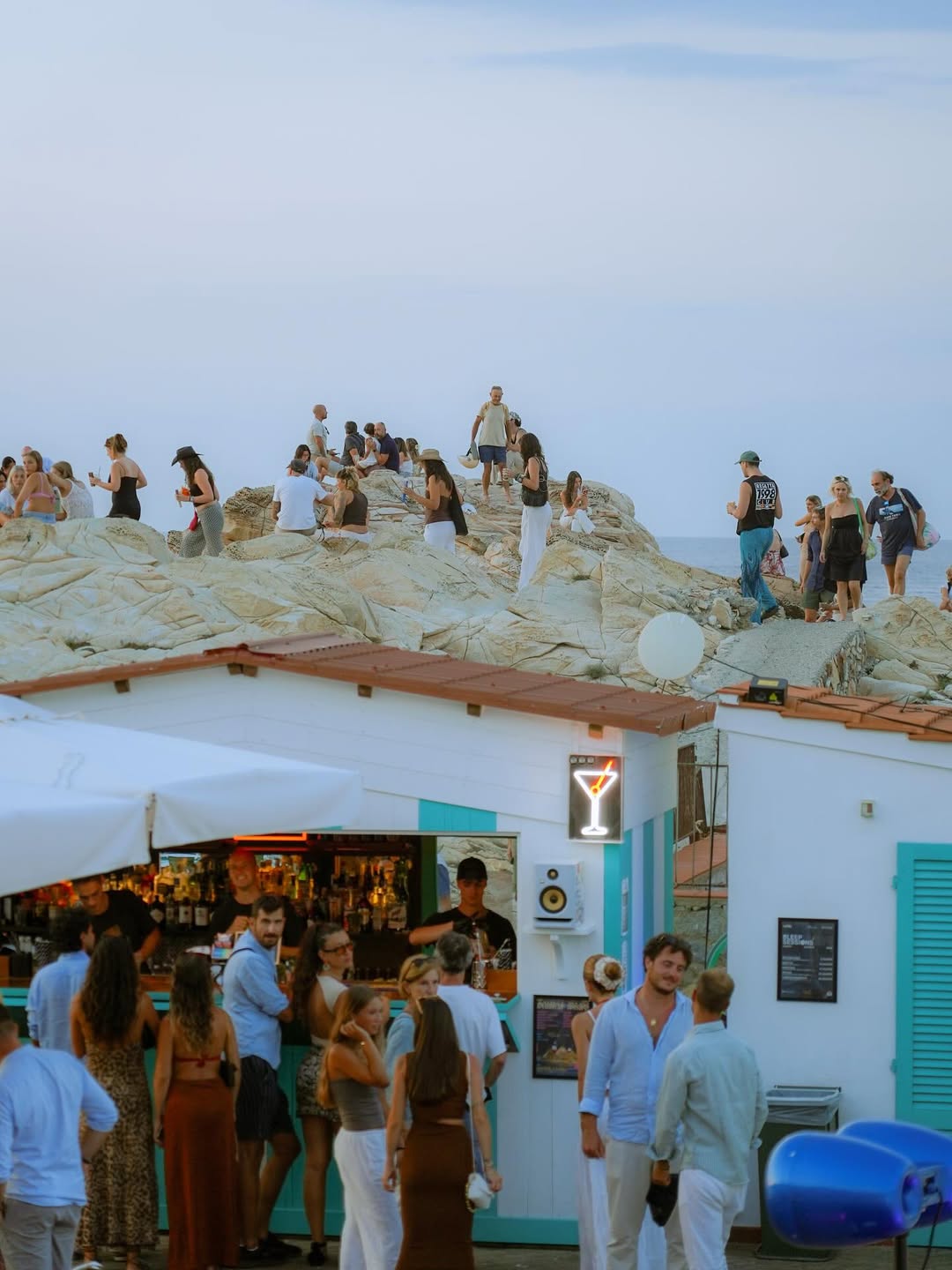
Courtesy of @bleep_cocktails
WHERE TO SWIM ON ELBA
The key to finding the perfect swimming spot on Elba is to understand which way the wind is blowing. Use one of the local weather apps or look to see which way the boats are pointing to determine whether there is a northern or southern wind. If there is a southern scirocco wind, it’s best to head for the sheltered beaches on the north of the island, where the white pebble beaches are protected by the cliffs: Spartaia, Cavo, Sant’Andrea, and Biodola.
On days where there is a northerly maestrale wind, the white sandy beaches on the south of the island are simply paradise. Cavoli, Lacona, and Marina di Campo are some of the most stunning. If you like more adventurous swims, Pomonte has a large rock that locals jump off of before hauling themselves back up via rope. As for that perfect beach with crystal clear water? The answer, my friend, is blowing in the wind…
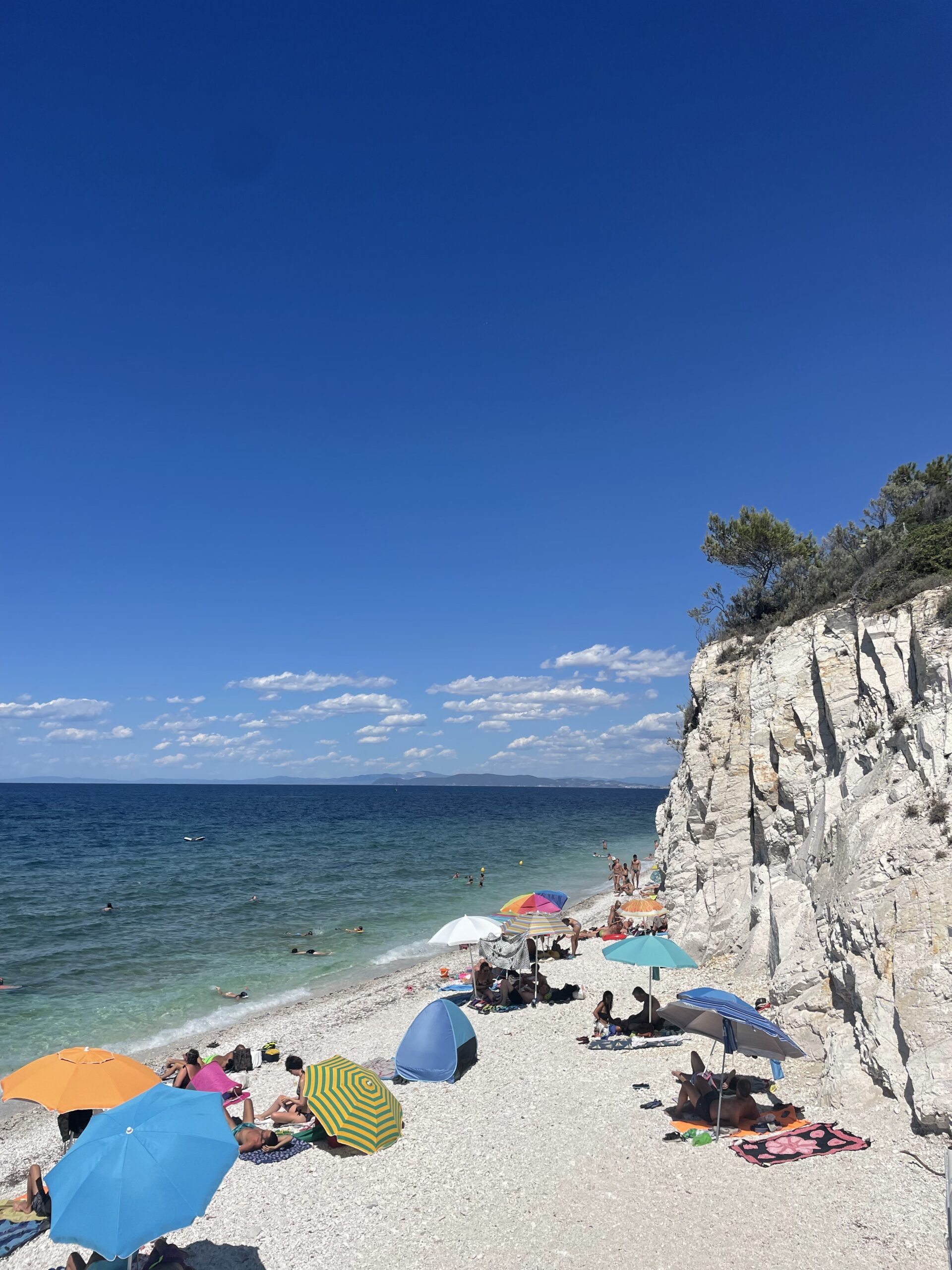
One of Elba's rocky beaches
WHAT TO DO ON ELBA
Take a bike ride – Cycle along the dramatic western coastal road and try to spot the island of Corsica in the distance. Stop for granita in every village along the way.
Swim to a shipwreck – Swim out to the shipwreck off Pomonte beach—just east of Ogliera Rock—and snorkel around the eerie wreckage alongside hundreds (!) of fish. At about 12 meters deep, the Elviscot was heading from Naples to Marseilles in 1972 when it crashed into the rocks. Make sure to bring goggles, and it’s best to go as a pair.
Hike up to the lighthouse at Capo di Poro – Though the lighthouse itself is pretty simple, you’ll find fabulous views of sweeping bays on each side. The hike starts in the port of Marina di Campo, involves a 100-meter incline, and takes about two hours round trip. Make sure to wear the right shoes and bring plenty of water—Elba doesn’t have much shade!
Visit a hilltop village (or two) – Some of the most charming villages on the island for a stroll and some shopping include Capoliveri, Poggio, Marciana, Sant’Ilario, and Rio nell’Elba. Check out their markets, pop into any osteria, and get a feel of local life.
Take the ferry to the nearby island of Pianosa – Once home to a maximum-security prison full of Italian Mafia bosses serving time, Pianosa is now a glorious hidden gem. The waters surrounding the island have been a marine protected area for 25 years, meaning fishing and anchoring boats are banned, plus the island only permits 250 visitors per day and only via guided excursions, so there is a dazzling array of largely undisturbed fish patrolling the waters. You can book your trip from Portoferraio.
Find some live music – Elba has many open-air venues that host live music and DJ sets in the summer evenings. My favorite Elban band is La Compagnia Scapestrati, whose brilliant tunes are perfect for dancing under the stars all night long.
Stargaze – Head to one of the hilltop villages with the least light pollution (San Pietro or Capoliveri are good choices) on a clear night to marvel at the night sky. Extra points if you pack a picnic and bottle of local Ansonica wine!
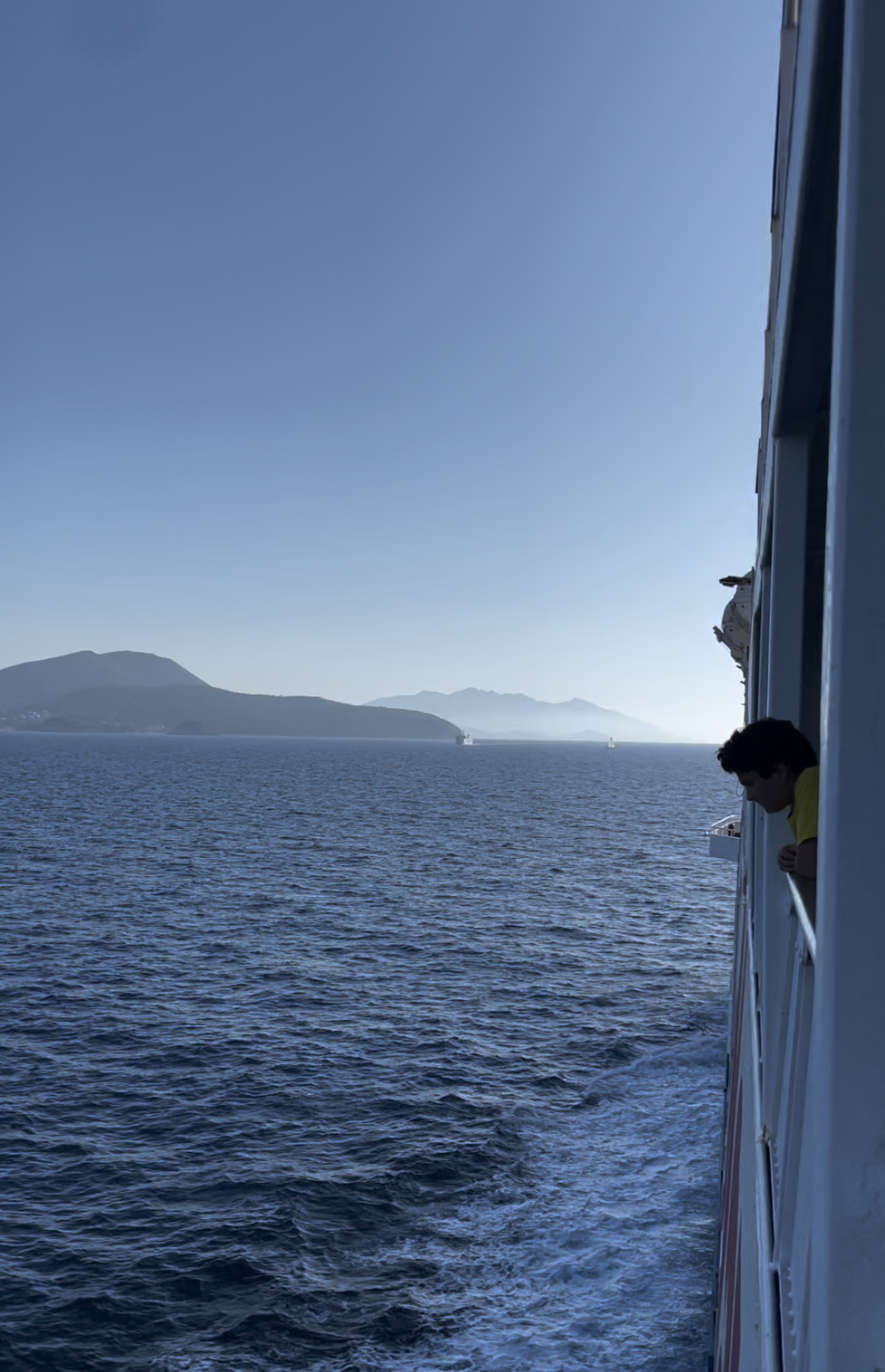
WHERE TO SHOP ON ELBA
Viola Vintage (Marciana Marina) – This vintage store has a stunning collection of chic, colorful clothes, designer jewelry, and delicate handbags, and is run by an equally hip woman who will help you style everything.
Etno Bazar (Marina di Campo) – This eclectic shop is my favorite place to pick up a hand-printed pareo or beautiful bedspread. They have a whole collection of colorful homeware, plus jewelry and linens imported from Asia.
Locman (Portoferraio & Marina di Campo) – This is the shop for luxury timepieces. Now an internationally recognized luxury watch brand, Locman was founded on Elba and pays homage to the island’s spirit in their designs.
Alimentari da Bruno (Procchio) – My go-to spot, located in Procchio, for the freshest fruit and veggies. You’ll find a few jarred and dried staples, too, making it pretty much one-stop shopping.
Calata Mazzini 15 (Portoferraio) – Look no further than this charming enoteca in Portoferraio for the greatest selection of the island’s local wines. Elba Bianco, Vermentino, and Ansonica are three of the best DOC whites, but don’t miss the native Aleatico red.
Conserveria Tonnina (Marina di Campo) – The best spot to pick up local tuna (in adorable packaging), plus bonito, mackerel, and anchovies. The store was opened to honor Elba’s tuna processing tradition, once central to the island’s economy when local factories salted, canned, and exported tuna throughout the Mediterranean.


